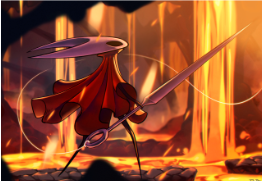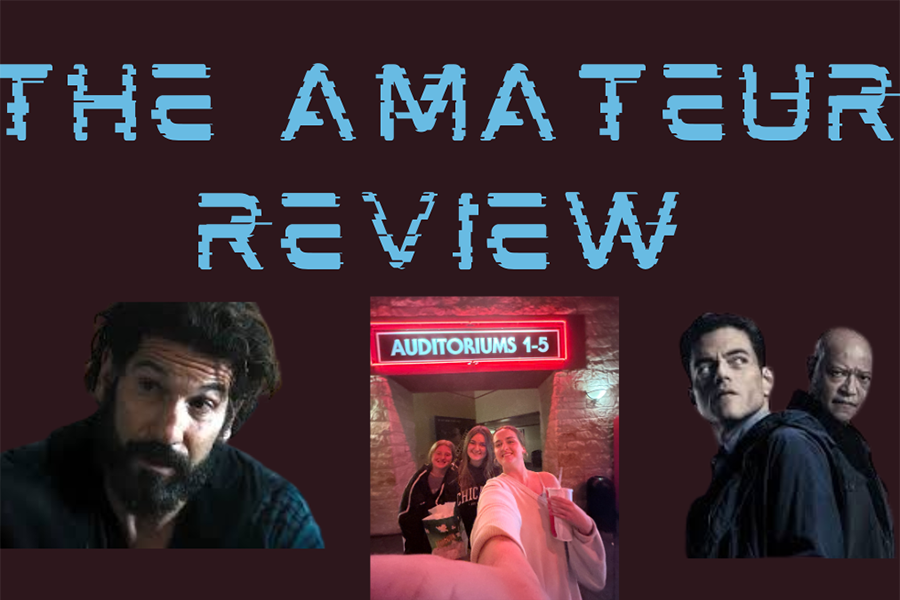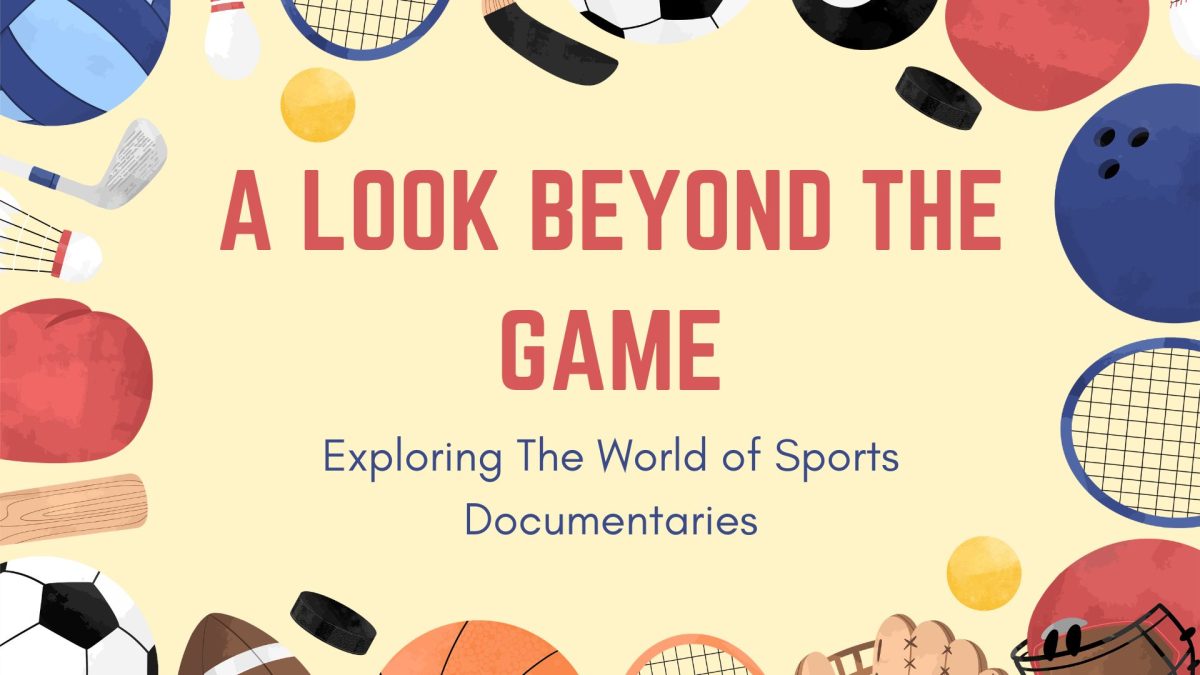I want to start this article by saying that I am a huge fan of the LEGO Movies. I think some are better than others, but all of them are equally stunning in terms of visuals and are written with such passion and care put into them. So, “Piece by Piece” being a LEGO movie already makes the rating very high. I also went to see the movie with a good pal of mine, which only heightened the experience.
“Piece by Piece” is an odd film, to say the least. It isn’t a traditional biopic or documentary, and I think that is why it works so well within the genre and context it is under. Using an animation medium to create the movie allows for more creativity and artistic expression for scenes and set pieces. The film is a combination of traditional documentary-style interviews, retellings, scripted segments and metaphorical dream-like sequences. This use of different genre tropes all merging in with each other allows for something unprecedented, and it excels in what it wants to do.
First, let’s discuss the story itself. This is a biopic/documentary, so it is mainly told from the perspective of Pharrell Williams, with lots of commentary from friends and family. Because of this, there isn’t really objective knowledge about how truthfully these events are portrayed. I’m not saying that none of what is in the movie happened, but it does have the possibility of being exaggerated for the story’s sake. Now, what that means for the story is that the retelling of said events are probably a lot cooler-seeming in the movie than actual life, but I will not be complaining. You know why? Because it’s cool. So cool in fact, that all Pharrell-haters have been cast into a pit of flames, by me. There are a couple historical inaccuracies, but who cares? This is the movies. Suspension of disbelief is cool.
The storyline is fairly simple. Pharrell grew up in Virginia Beach, as well as many other big artists and producers such as Pusha T, Missy Elliot, Timbaland and Chad Hugo, and was mesmerized by music from a young age. Chad Hugo and Pharrell became very close friends, then formed the producing group called “The Neptunes.” However, in the movie, Shay Haley is also a part of the group, despite not joining until a few years later, when their group “N.E.R.D.” was formed. This is one of our first historical accuracies. “Who is Shay Haley?” You may be asking. Well, I can tell you that his Wikipedia page is a lot shorter than the Wikipedia page for bread. There’s not much to him.
The Neptunes start forming more connections with people in the music industry as time goes on and they get discovered by Teddy Riley after his studio moves in a few blocks down from their school, where they start producing tracks and writing lyrics for some of the biggest artists out there. Pharrell’s ego eventually gets too big and he starts trying to do too much, eventually hitting rock bottom. He then sings with Daft Punk, marries the love of his life, makes a song for “Despicable Me 2” and all is forgiven. Pharrell then reflects on his life, and we have a LEGO big dance party at the end. Now this quick recap of the movie may sound silly, mostly because it kind of is, but at the same time, it was fun and incredibly moving.
Now, once again, the historical accuracy is debatably incorrect for a lot of this movie. For instance, not once do they mention the formation of N.E.R.D., and it is implied that Shay Haley was just always there as a part of The Neptunes even though he is barely seen throughout the movie. All the scenes of The Neptunes producing songs are just Pharrell and Chad, because that is how it was. It creates this stark contrast between reality and the writing, and doesn’t track for most of the movie. N.E.R.D. was a huge part of Pharrell’s career, and they never really mention it. Sure, they use a few songs, one of which was during the most impactful moments of the movie, but it is also very strange that they don’t touch on that topic. While I have my issues with it, I understand that there is the possibility of legal issues, resulting in the absence of the group. It is also very possible that it wasn’t mentioned due to time constraints or story cohesiveness. The absence of N.E.R.D. isn’t the only thing that is missing; many other artists Pharrell or The Neptunes worked with aren’t mentioned, one of which being P. Diddy, who is only mentioned on screen via text. It boggles my mind why they removed one of Pharrell’s closest collaborators and why he wasn’t in the movie. I wonder what happened in order to lead to his removal? I guess some mysteries will forever be unsolved. Overall, while the story is a little convoluted in terms of time, relevance and accuracy, it still is able to make for a very interesting movie.
Next, we have the visuals of the movie, and wow. Just wow. This movie is filled with beautiful and brightly-colored images (more on that later) just gracing that silver screen. Only comparable to Andy Warhol or Jackson Pollock. I’m kind of joking here. The movie really is visually stunning, and a great piece of animation, but it’s also LEGO, which is amazing on its own. I’m a huge fan of LEGO, and the way each movie figure, building and set piece are animated is nothing short of fantastic, but it is by no means a technical marvel. The film isn’t as extravagant as the other LEGO movies, due to the film’s grounded nature.
One thing that really makes this film pop is the purposeful use of color. The way color and hue is used throughout the movie is creative and endearing, and it all stems from the real condition Pharrell has. Pharrell Williams has something called synesthesia, a neurological condition where he sees sounds as colors; it’s the linking of the primary sense that is meant to take in information, and connecting it to a secondary sense. This very thing is what caused Pharrell to get involved with music, as he was literally entranced by the speakers creating shapes and colors around him. This is shown a monstrous number of times throughout the movie, and gives a stronger visual feel to all the music and sound we hear by creating these beautiful mosaics of intertwined color and emotion. Each musical number is accompanied by bright colors that transcend reality and time. It is a fundamental piece of the movie.
Of course, this being a movie about music, we need to talk about the sound. This film is filled with needle-drops. Barely a second can pass without the movie playing a 2000s hip-hop song or a 2010s rap song. Nearly all songs in this movie are produced by Pharrell, with a couple older hits from his childhood and a bit of original composition. This is the opposite of a silent film; it is a very loud and strong-sounding film. Each beat produced has its own unique feel both visually and musically, as they are characterized by LEGO studs and bricks shaking around—playing off of Pharrell’s synesthesia. What sets the sound apart from other LEGO movies is that there are hardly any LEGO-like sounds. It has a highly realistic sound design that kind of clashes with the visual style, the more I think about it. The differences between the sounds and visuals are not highly noticeable and not super disorienting, but still strange.
One of the largest criticisms I’ve seen surrounding the film is the huge tonal shifts, and how serious they are taken. This film has a lot of serious and impactful moments that are very difficult to appreciate fully, because the movie is animated in LEGO bricks. There are a lot of heavy moments in Pharrell’s life that are in the film, such as the death of his grandma, him hitting rock bottom as a musician and his internal struggle with creative block. These scenes are sometimes, unfortunately, hard to take seriously. Picture this: Pharrell is talking about the loss of someone very important to him, and a LEGO mini figure ghost walks into frame. Or, whenever Pharrell hits his lowest point, he looks into the studio and a fish starts singing “Sooner or Later” by N.E.R.D. right before a very intense scene where he almost drowns in this giant metaphor. This intense drowning scene is then interrupted by a giant spaceship beaming him up into space, and then he goes back down to earth to sing “Get Lucky” with Daft Punk. I mean, LEGO Pusha T partakes in a drug deal, and while that scene is playing out he is recalling how difficult it was for him to survive after he lost his record deal. This would be a heavy-hitting moment if it wasn’t animated with a kids toy. It kind of diminishes the severity of the moment, but the message does still get its point across.
The final thing I want to talk about is the use of water throughout the film. Water comes up a lot throughout the movie, both physically and metaphorically. Growing up in Virginia Beach, it is noted that many people would say “there’s something in water,” in reference to the several creative minds that come out of that city. This is mentioned a couple times by artists in the movie, and is explored often. The city of Atlantis and King Poseidon are mentioned in original songs for the movie. When Pharrell is at an all-time low, his studio caves in with water, nearly drowning him. Water pours through the streets afterwards to represent his spiral downwards. He has his revelations and reflections by the beachside. He gets the idea for “Happy” while bathing his LEGO baby son with no legs. All of these coincide with the idea of something being in the water, and it represents his upbringing and downfall at the same time. It is a very interesting use of the phrase, especially when using a bunch of plastic bricks to visualize it.
Even with its flaws, “Piece by Piece” is a magnificent movie that I seem to like a lot more than others. My rating is a little higher than the average review of this film, as I give it a solid 8/10. This is definitely a high recommendation by me, and I encourage you to give it a watch. You won’t regret it!






![Senior Jett Mckinney stores all the clothes in his own room, with half of it stored in his closet along with his personal clothes, and the rest taking up space in his room.
“There’s been times [when] there’s so much clothing stored here and it gets overwhelming, so I end up having to sleep somewhere else in the house,” Mckinney said.](https://cphswolfpack.com/wp-content/uploads/2025/11/DSC_0951-1200x800.jpg)


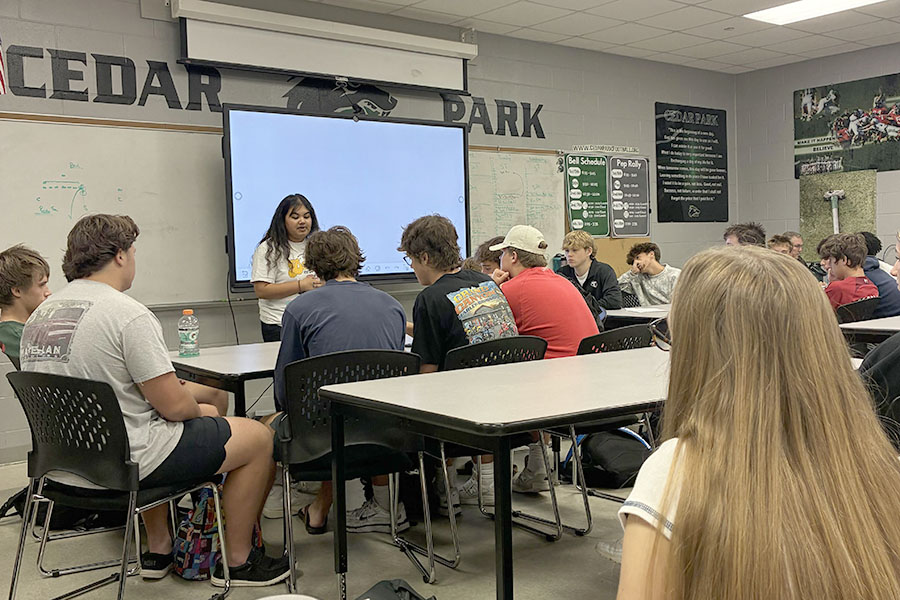
![Broadcast, yearbook and newspaper combined for 66 Interscholastic League Press Conference awards this year. Yearbook won 43, newspaper won 14 and broadcast took home nine. “I think [the ILPC awards] are a great way to give the kids some acknowledgement for all of their hard work,” newspaper and yearbook adviser Paige Hert said. “They typically spend the year covering everyone else’s big moments, so it’s really cool for them to be celebrated so many times and in so many different ways.”](https://cphswolfpack.com/wp-content/uploads/2025/05/edited-ILPC.jpg)
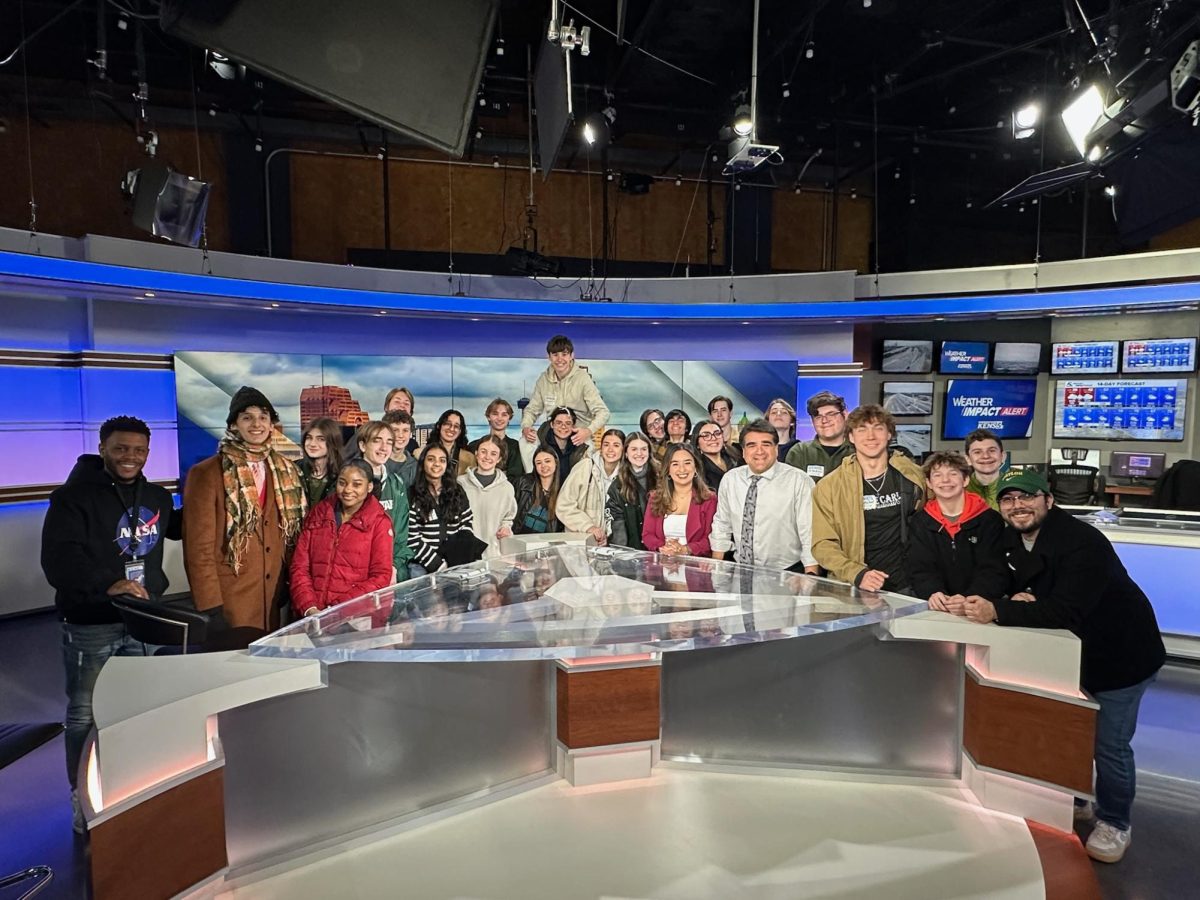



![Looking down at his racket, junior Hasun Nguyen hits the green tennis ball. Hasun has played tennis since he was 9 years old, and he is on the varsity team. "I feel like it’s not really appreciated in America as much, but [tennis] is a really competitive and mentally challenging sport,” Nguyen said. “I’m really level-headed and can keep my cool during a match, and that helps me play a bit better under pressure.” Photo by Kyra Cox](https://cphswolfpack.com/wp-content/uploads/2025/09/hasun.jpg)

![Bringing her arm over her head and taking a quick breath, junior Lauren Lucas swims the final laps of the 500 freestyle at the regionals swimming competition on date. Lucas broke the school’s 18-year-old record for the 500 freestyle at regionals and again at state with a time of 4:58.63. “I’d had my eye on that 500 record since my freshman year, so I was really excited to see if I could get it at regionals or districts,” Lucas said. “ State is always a really fun experience and medaling for the first time was really great. It was a very very tight race, [so] I was a bit surprised [that I medaled]. [There were] a lot of fast girls at the meet in general, [and] it was like a dogfight back and forth, back and forth.” Photo by Kaydence Wilkinson](https://cphswolfpack.com/wp-content/uploads/2025/03/Kaydence-2.7-23-edit-2.jpg)


![As her hair blows in the wind, senior Brianna Grandow runs the varsity girls 5K at the cross country district meet last Thursday. Grandow finished fourth in the event and led the varsity girls to regionals with a third place placement as a team. “I’m very excited [to go to regionals],” Grandow said. “I’m excited to race in Corpus Christi, and we get to go to the beach, so that’s really awesome.” Photo by Addison Bruce](https://cphswolfpack.com/wp-content/uploads/2025/10/brianna.jpg)


